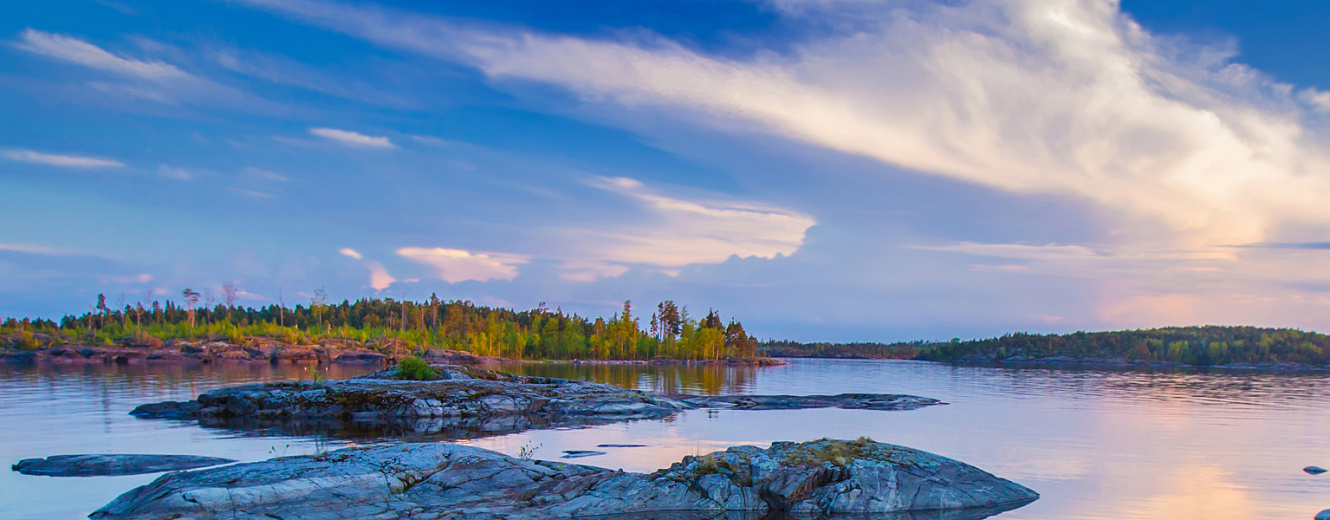Ladoga Lake

Ladoga Lake is the largest in Europe, twice as large as Onega. Fed by water from 3,500 rivers and dotted by more than 500 islands, it covers 18,000 square kilometers in area, with a maximum length of 219 km, an average width of 83 km and an average depth of 50 m. Its boundless space looks like a sea, as no shore is visible from its open part. The lake is surrounded by flat expanses of beech, willow, fir and spruce trees that stretch as far as the eye can see.
It is best to explore the Lake Ladoga by ship as you’ll feel its wild spirit and enjoy breathtaking views. Lake Ladoga is especially nice in summer when there is an opportunity to sunbathe on the open Sun deck during your cruise with Vodohod.
Lake Ladoga was created by glacial activity that scoured away rock and soil and left a large depression that filled up with water. Its southeastern shores are low and regular, with no islands nearby. The northwestern part that we are bound for has numerous islands fringing the shores, which are high, craggy and broken by deep fjord-like inlets. They are strikingly beautiful with their high sheer granite rocks sharply rising above the water. Many quarries have been active on the northern shores. Granite obtained there was used for St. Petersburg’s construction.
Lake Ladoga is an important commercial waterway but since ancient times. The 75-kilometer (46-mile)-long Neva River connects Lake Ladoga to the Baltic Sea and St. Petersburg. Today ships and boats conveying passengers from St. Petersburg to Moscow, Nizhny Novgorod and Astrakhan and tourists to Valaam and the fortress of Oreshek cross Ladoga Lake.
The lake is an inexhaustible source of drinking water for St. Petersburg. There are also about 53 species of fish and a wonderful animal - Ladoga ringed seal is a freshwater subspecies of the ringed seal.
By the way, Vodohod cruises from or to St. Petersburg lie through Ladoga Lake, so we are happy to invite you onboard to get acquainted with this unique natural phenomena!

